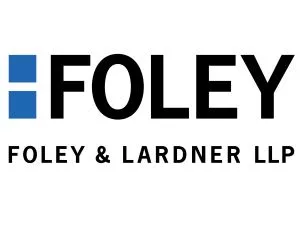- within Intellectual Property topic(s)
- with readers working within the Pharmaceuticals & BioTech industries
- within Government, Public Sector, Coronavirus (COVID-19) and Insurance topic(s)
For a decade, innovators at the intersection of artificial intelligence (AI) and precision medicine have faced a stubborn paradox: the very breakthroughs in software and machine learning that enable early cancer detection and personalized therapy recommendations are often denied U.S. patent protection. Under the unpredictable Alice/Mayo framework, patent examiners and courts frequently categorize adaptive AI models as "abstract ideas," equating them to mathematical exercises rather than technological advances deserving protection.
The result has been a chilling effect on investment and disclosure in one of health care's most promising frontiers and, potentially, a threat to the United States' leadership in biomedical AI.
The USPTO's September 25, 2025, Ex parte Desjardins,1 rehearing marks the clearest acknowledgment that AI innovations, including those with health care applications, can be patent-eligible. The Appeals Review Panel ("ARP") vacated a § 101 rejection against DeepMind's continual learning framework, holding that it integrated a mathematical concept into a practical application by improving the model's own functionality. Notably, not only did the ARP reverse the Board and find the claims patent-eligible,2 but the decision was also authored by John A. Squires, the new Director of the US Patent and Trademark Office.
The Rejected Claims
The claims under consideration relate to a computer-implemented method of training a machine learning model. Representative independent claim 13 recites:
- A computer-implemented method of training a machine learning
model,
wherein the machine learning model has at least a plurality of parameters and has been trained on a first machine learning task using first training data to determine first values of the plurality of parameters of the machine learning model, and wherein the method comprises:
determining, for each of the plurality of parameters, a respective measure of an importance of the parameter to the first machine learning task, comprising:
computing, based on the first values of the plurality of parameters determined by training the machine learning model on the first machine learning task, an approximation of a posterior distribution over possible values of the plurality of parameters, assigning, using the approximation, a value to each of the plurality of parameters, the value being the respective measure of the importance of the parameter to the first machine learning task and approximating a probability that the first value of the parameter after the training on the first machine learning task is a correct value of the parameter given the first training data used to train the machine learning model on the first machine learning task;
obtaining second training data for training the machine learning model on a second different machine learning task; and training the machine learning model on the second machine learning task by training the machine learning model on the second training data to adjust the first values of the plurality of parameters to optimize performance of the machine learning model on the second machine learning task while protecting performance of the machine learning model on the first machine learning task;
wherein adjusting the first values of the plurality of parameters comprises adjusting the first values of the plurality of parameters to optimize an objective function that depends in part on a penalty term that is based on the determined measures of importance of the plurality of parameters to the first machine learning task.
Legal Analysis
The ARP followed the Alice/Mayo two-step test and the MPEP § 2106 analytical framework.4 The panel confined its analysis to Step 2A (Alice Step 1) because the issue was dispositive. Under Step 2A, Prong 1, the inquiry focuses on whether the claim recites an abstract idea. Here, the ARP did not dispute the Board's position that computing an approximation over parameters constitutes a mathematical calculation, and thus an abstract idea.5
The panel then proceeded to Step 2A, Prong 2, where the inquiry focuses on whether the abstract idea is integrated into a practical application. This is where the ARP disagreed with the Board on a number of grounds. First, the ARP found that the claims provided technical improvements in how the learning model itself operates by preserving earlier knowledge while reducing storage needs and system complexity.6 Second, these improvements are technical, not merely field of use limitations.7
The ARP cited to Federal Circuit case law to ground the decision, notably Enfish, LLC. V. Microsoft Corp., 822 F.3D 1327, 1339 (Fed. Cir. 2016) and McRO, Inc. v. Bandai Namco Games Am. Inc., 837 F.3d 1299, 1315 (Fed. Cir. 2016), that found that software-based structural or logical improvements can be patent-eligible.8 The ARP specifically emphasized Enfish, stating the case is "among the Federal Circuit's leading cases on the eligibility of technological improvements" and quoted the decision in Enfish stating "[s]oftware can make non-abstract improvements to computer technology, just as hardware improvements can." The ARP proceeded to point to language in the specification describing how the claimed invention uses less storage capacity and enables reduced system complexity as reflecting a patent eligible technical improvement. Each of the points the ARP raised in view of Step 2A, Prong 2 of the Alice/Mayo testappears to establish that improvements to machine learning models or algorithms themselves are improvements to technology and are therefore patent-eligible.
In summary, Desjardins sets a new tone for the application of current Federal Circuit § 101 jurisprudence and highlights and recognizes the importance of AI to the United States' technological innovation:
Categorically excluding AI innovations from patent protection in the United States jeopardizes America's leadership in this critical emerging technology. Yet, under the panel's reasoning, many AI innovations are potentially unpatentable-even if they are adequately described and nonobvious-because the panel essentially equated any machine learning with an patentable "algorithm" and the remaining additional elements as "generic computer components," without adequate explanation. Examiners and panels should not evaluate claims at such a high level of generality.9
In addition to vacating the rejection under 35 U.S.C. 101, and making a bold statement as to the importance of AI-related technologies, Director Squires places 35 U.S.C. § 101 in its proper role in patentability analysis, noting that "[t]his case demonstrates that §§ 102, 103 and 112 are the traditional and appropriate tools to limit patent protection to its proper scope. These statutory provisions should be the focus of examination."10
Closing Thoughts and Recommendations11
AI in personalized medicine often integrates multi-omics, imaging and clinical data and learns from prior patients while adapting to new ones. Under Desjardins, if one ties those methods to technical improvements in the model's architecture or training, one can argue that continual learning improves how the model functions. In addition, AI tools that improve model generalization, interpretation or training efficiency, or use hybrid architectures, or reduce drift or overfitting across patient populations, are not mere abstract ideas. In sum, personalized-medicine AI that changes how the computer learns, not just what it learns, may be a new safe harbor for patent-eligibility for some AI health care inventions.
Footnotes
1. Ex parte Desjardins, Appeal 2024-000567, September 26, 2025.
2. The ARP did not review or reverse the Board's rejection of the claims as obvious over 35 U.S.C. § 103.
3. Ex parte Desjardins, at 2-3.
4. Id. at 4-6.
5. Id. at 6-7.
6. Id. at 8-9.
7. Id.
8. Id.
9. Id .at 9.
10. Id., internal citations omitted.
11. While Desjardins is not precedential in the same way as a decision issued by the courts, ARP decisions are binding on the USPTO under Director authority. Thus, examiners and PTAB panels must follow this reasoning unless overruled by the Federal Circuit or a future ARP decision.
The content of this article is intended to provide a general guide to the subject matter. Specialist advice should be sought about your specific circumstances.



